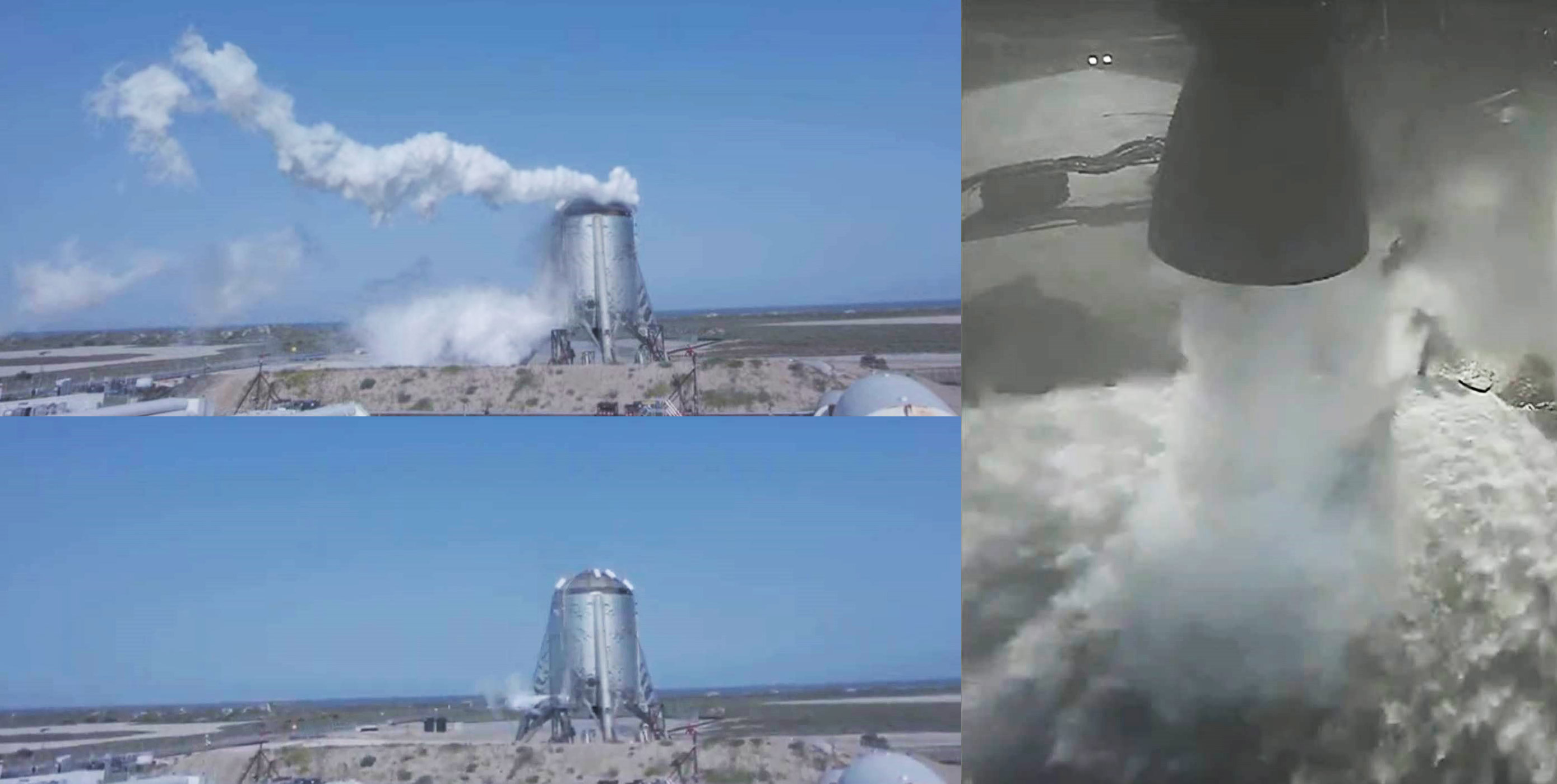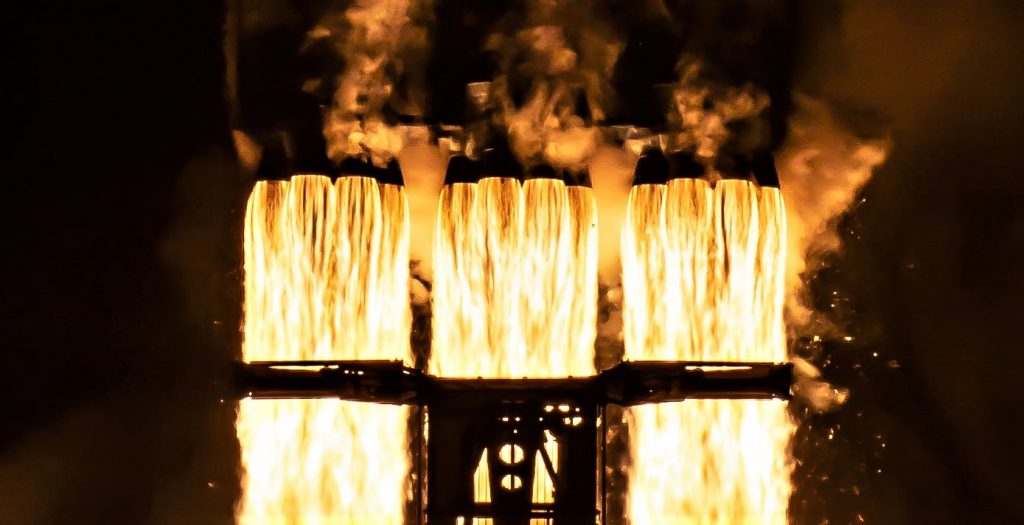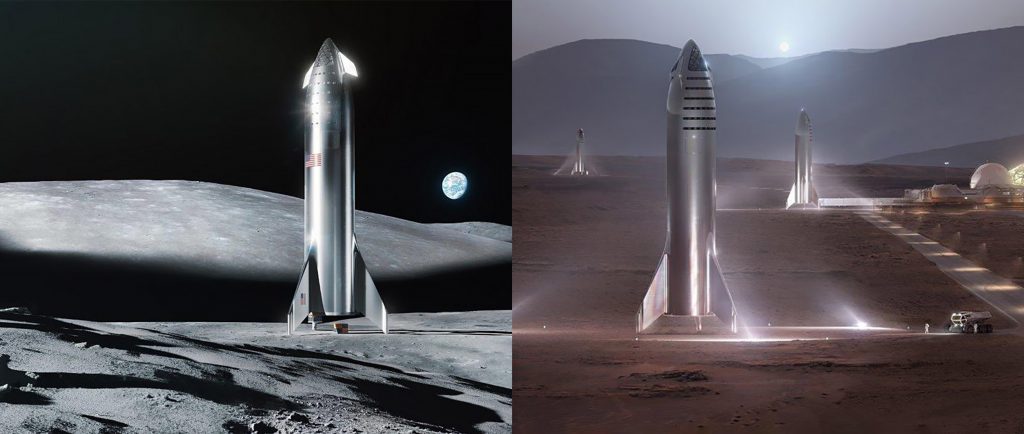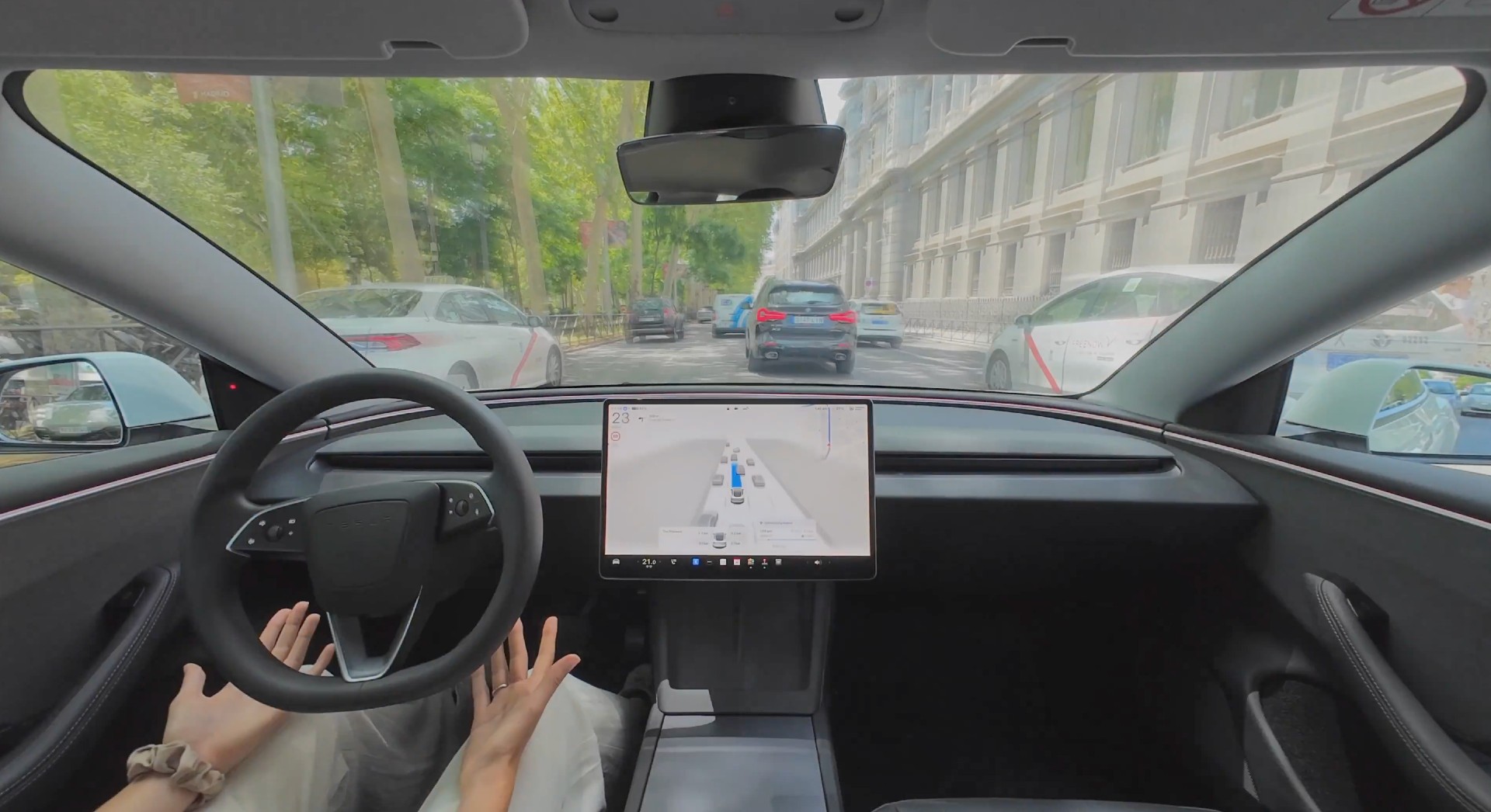

News
SpaceX scrubs Starhopper’s final Raptor-powered flight as Elon Musk talks “finicky” igniters
For unknown reasons, SpaceX’s Starhopper prototype suffered a hold just 0.8 seconds prior to its second planned flight test, a hold that was eventually followed by a decision to scrub the August 26th attempt and try again tomorrow, August 27th.
Starhopper is a full-scale, partial-height testbed for SpaceX’s next-generation Starship launch vehicle, serving more as a semi-mobile test stand for steel rockets and Raptor engines than an actual Starship prototype. The unusual vehicle took flight for the first time ever on July 25th, reaching an altitude of roughly 20m (65 ft) under the power of a single Raptor engine, capable of producing up to 200 tons (450,000 lbf) of thrust. That test also suffered a minor scrub on the 24th, followed by a successful flight one day later, a chapter that Starhopper may now mirror on its second attempted flight, a 150m (500 ft) hop.
Notably, SpaceX CEO Elon Musk took to Twitter just seconds after the rocket’s scheduled liftoff suffered a last-second hold to indicate that Raptor’s torch igniters were proving somewhat finicky relative to the chemical alternative used by SpaceX’s proven Merlin engines.
The CEO later confirmed that that comment was directly related to the 26th’s scrub, indicating that Raptor serial number 06 (SN06) needed to have its igniters inspected prior to a second hop test attempt, now scheduled to occur no earlier than 6pm EDT (22:00 UTC) on August 27th. The gist of the difficulties with Raptor’s igniter starts with the reason that SpaceX is attempting to integrate an entirely new form of ignition into the engine, replacing the methods successfully used over tens or even hundreds of thousands of seconds of firing with the company’s Merlin 1 and Merlin Vacuum engines.
Merlin 1D and MVacD both rely on a relatively simple, reliable, cheap, and easy method of chemical ignition, using a duo of pyrophoric materials known as triethylaluminum-triethylborane (TEA-TEB). When mixed, these materials immediately combust, generating an iconic green flash visible during Falcon 9 and Heavy launches, and thus producing the ‘spark’ needed to start Merlin engines.

Generally speaking, TEA-TEB is an excellent method of igniting rockets, even if it is more of a brute-force, inelegant solution than alternatives. It does, however, bring limitations: every single ignition requires a new ‘cartridge’ be expended, fundamentally limiting the number of times Merlin 1D (and Merlin Vacuum) engines can be ignited before and after liftoff.
This doesn’t even consider the fact that TEA-TEB are extremely complex chemical products that would be next to impossible to produce off of Earth, at least for the indefinite future.
To combat these downsides, SpaceX has designed Raptor with an entirely different method of ignition, known as torch ignition. Technically speaking, Raptor’s power, design, and methalox propellant combine to demand more than a relatively common solution, in which spark plugs are used to ignite an engine. Instead, Raptor uses those spark plugs to ignite its ignition sources, what CEO Elon Musk has described as full-up blow torches. Once ignited, those blow torches – likely miniature rocket engines using the same methane and oxygen fuel as Raptor – then ignite the engine’s methane and oxygen preburners before finally igniting those mixed, high-pressure gases in the combustion chamber.
In simple terms, the fact that Raptor is a full-flow staged-combustion (FFSC) engine means that the pressures it must operate under are extreme, verging on unprecedented in large-scale rocketry. Extremely high-pressure gases (on the order of 3,000-10,000+ psi or 200-700+ bar) are just as difficult to reliably ignite, especially if hypergolic solutions (i.e. TEA-TEB) are off the table.
To get an even ignition – critical to avoid burn-through, minor explosions, and even catastrophic engine failures – Raptor’s torch ignition may actually involve a 360-degree ring of spark plug-lit torches around the point of ignition, an undeniably complex solution.

However, as Musk notes, these significant, “finicky” challenges brought on by Raptor’s exotic ignition method are motivated by the potential benefits such a solution might bring. Relative to Merlin 1D’s TEA-TEB ignition, torch ignition – once optimized and matured into a reliable solution – will permit an almost unlimited number of Raptor ignitions before, during, and after flight.
Avoiding TEA-TEB and other complex chemical igniters also means that Starship will technically be able to launch to Mars or the Moon, perform injection and landing burns, maybe even hop around the surface, and still be able to return to Earth – all without resupply. Such a return voyage would still be predicated on the ability to generate the methane and oxygen propellant needed to fuel Starships, but – assuming that challenge can be solved – torch-lit Raptors would be ready for such a mission. In the event that, say, something like August 26th’s scrub happens to a Starship on Mars, the crew would also be able to get out, inspect Starship’s Raptors, and even replace faulty spark plugs if necessary.

Technically, one could bring lots of spare TEA-TEB cartridges and install those in space or after landing, but those cartridges are quite literally firebombs waiting to ignite, whereas spare spark plugs are entirely inert.
For now, we’ll have to wait for SpaceX technicians to get their eyes and hands-on Starhopper’s lone Raptor engine to verify that its ignition hardware is in good health. If all goes well, Starhopper will attempt its final flight test as early as August 27th.
Update (August 27th): Starhopper is reportedly set for a second attempted 150m (500 ft) flight test today, scheduled to occur no earlier than 5pm EDT (21:00 UTC) on August 27th. Stay tuned for SpaceX’s official Livestream!
Check out Teslarati’s Marketplace! We offer Tesla accessories, including for the Tesla Cybertruck and Tesla Model 3.
Elon Musk
Why Tesla’s Q3 could be one of its biggest quarters in history
Tesla could stand to benefit from the removal of the $7,500 EV tax credit at the end of Q3.

Tesla has gotten off to a slow start in 2025, as the first half of the year has not been one to remember from a delivery perspective.
However, Q3 could end up being one of the best the company has had in history, with the United States potentially being a major contributor to what might reverse a slow start to the year.
Earlier today, the United States’ House of Representatives officially passed President Trump’s “Big Beautiful Bill,” after it made its way through the Senate earlier this week. The bill will head to President Trump, as he looks to sign it before his July 4 deadline.
The Bill will effectively bring closure to the $7,500 EV tax credit, which will end on September 30, 2025. This means, over the next three months in the United States, those who are looking to buy an EV will have their last chance to take advantage of the credit. EVs will then be, for most people, $7,500 more expensive, in essence.
The tax credit is available to any single filer who makes under $150,000 per year, $225,000 a year to a head of household, and $300,000 to couples filing jointly.
Ending the tax credit was expected with the Trump administration, as his policies have leaned significantly toward reliance on fossil fuels, ending what he calls an “EV mandate.” He has used this phrase several times in disagreements with Tesla CEO Elon Musk.
Nevertheless, those who have been on the fence about buying a Tesla, or any EV, for that matter, will have some decisions to make in the next three months. While all companies will stand to benefit from this time crunch, Tesla could be the true winner because of its sheer volume.
If things are done correctly, meaning if Tesla can also offer incentives like 0% APR, special pricing on leasing or financing, or other advantages (like free Red, White, and Blue for a short period of time in celebration of Independence Day), it could see some real volume in sales this quarter.
You can now buy a Tesla in Red, White, and Blue for free until July 14 https://t.co/iAwhaRFOH0
— TESLARATI (@Teslarati) July 3, 2025
Tesla is just a shade under 721,000 deliveries for the year, so it’s on pace for roughly 1.4 million for 2025. This would be a decrease from the 1.8 million cars it delivered in each of the last two years. Traditionally, the second half of the year has produced Tesla’s strongest quarters. Its top three quarters in terms of deliveries are Q4 2024 with 495,570 vehicles, Q4 2023 with 484,507 vehicles, and Q3 2024 with 462,890 vehicles.
Elon Musk
Tesla Full Self-Driving testing continues European expansion: here’s where
Tesla has launched Full Self-Driving testing in a fifth European country ahead of its launch.

Tesla Full Self-Driving is being tested in several countries across Europe as the company prepares to launch its driver assistance suite on the continent.
The company is still working through the regulatory hurdles with the European Union. They are plentiful and difficult to navigate, but Tesla is still making progress as its testing of FSD continues to expand.
Today, it officially began testing in a new country, as more regions open their doors to Tesla. Many owners and potential customers in Europe are awaiting its launch.
On Thursday, Tesla officially confirmed that Full Self-Driving testing is underway in Spain, as the company shared an extensive video of a trip through the streets of Madrid:
Como pez en el agua …
FSD Supervised testing in Madrid, Spain
Pending regulatory approval pic.twitter.com/txTgoWseuA
— Tesla Europe & Middle East (@teslaeurope) July 3, 2025
The launch of Full Self-Driving testing in Spain marks the fifth country in which Tesla has started assessing the suite’s performance in the European market.
Across the past several months, Tesla has been expanding the scope of countries where Full Self-Driving is being tested. It has already made it to Italy, France, the Netherlands, and Germany previously.
Tesla has already filed applications to have Full Self-Driving (Supervised) launched across the European Union, but CEO Elon Musk has indicated that this particular step has been the delay in the official launch of the suite thus far.
In mid-June, Musk revealed the frustrations Tesla has felt during its efforts to launch its Full Self-Driving (Supervised) suite in Europe, stating that the holdup can be attributed to authorities in various countries, as well as the EU as a whole:
Tesla Full Self-Driving’s European launch frustrations revealed by Elon Musk
“Waiting for Dutch authorities and then the EU to approve. Very frustrating and hurts the safety of people in Europe, as driving with advanced Autopilot on results in four times fewer injuries! Please ask your governing authorities to accelerate making Tesla safer in Europe.”
Waiting for Dutch authorities and then the EU to approve.
Very frustrating and hurts the safety of people in Europe, as driving with advanced Autopilot on results in four times fewer injuries!
Please ask your governing authorities to accelerate making Tesla safer in Europe. https://t.co/QIYCXhhaQp
— Elon Musk (@elonmusk) June 11, 2025
Tesla said last year that it planned to launch Full Self-Driving in Europe in 2025.
Elon Musk
xAI’s Memphis data center receives air permit despite community criticism
xAI welcomed the development in a post on its official xAI Memphis account on X.

Elon Musk’s artificial intelligence startup xAI has secured an air permit from Memphis health officials for its data center project, despite critics’ opposition and pending legal action. The Shelby County Health Department approved the permit this week, allowing xAI to operate 15 mobile gas turbines at its facility.
Air permit granted
The air permit comes after months of protests from Memphis residents and environmental justice advocates, who alleged that xAI violated the Clean Air Act by operating gas turbines without prior approval, as per a report from WIRED.
The Southern Environmental Law Center (SELC) and the NAACP has claimed that xAI installed dozens of gas turbines at its new data campus without acquiring the mandatory Prevention of Significant Deterioration (PSD) permit required for large-scale emission sources.
Local officials previously stated the turbines were considered “temporary” and thus not subject to stricter permitting. xAI applied for an air permit in January 2025, and in June, Memphis Mayor Paul Young acknowledged that the company was operating 21 turbines. SELC, however, has claimed that aerial footage shows the number may be as high as 35.
Critics are not giving up
Civil rights groups have stated that they intend to move forward with legal action. “xAI’s decision to install and operate dozens of polluting gas turbines without any permits or public oversight is a clear violation of the Clean Air Act,” said Patrick Anderson, senior attorney at SELC.
“Over the last year, these turbines have pumped out pollution that threatens the health of Memphis families. This notice paves the way for a lawsuit that can hold xAI accountable for its unlawful refusal to get permits for its gas turbines,” he added.
Sharon Wilson, a certified optical gas imaging thermographer, also described the emissions cloud in Memphis as notable. “I expected to see the typical power plant type of pollution that I see. What I saw was way worse than what I expected,” she said.
-

 Elon Musk3 days ago
Elon Musk3 days agoTesla investors will be shocked by Jim Cramer’s latest assessment
-

 News1 week ago
News1 week agoTesla Robotaxi’s biggest challenge seems to be this one thing
-

 News2 weeks ago
News2 weeks agoTexas lawmakers urge Tesla to delay Austin robotaxi launch to September
-

 Elon Musk2 weeks ago
Elon Musk2 weeks agoFirst Look at Tesla’s Robotaxi App: features, design, and more
-

 Elon Musk2 weeks ago
Elon Musk2 weeks agoxAI’s Grok 3 partners with Oracle Cloud for corporate AI innovation
-

 News2 weeks ago
News2 weeks agoWatch Tesla’s first driverless public Robotaxi rides in Texas
-

 News2 weeks ago
News2 weeks agoSpaceX and Elon Musk share insights on Starship Ship 36’s RUD
-

 News2 weeks ago
News2 weeks agoTesla has started rolling out initial round of Robotaxi invites














